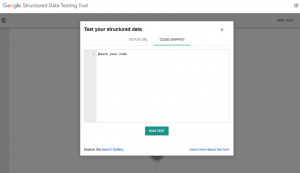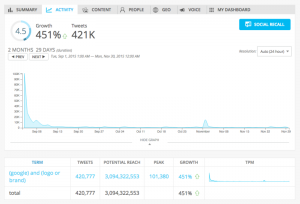Getting new customers can be difficult and costly. Selling to existing customers, on the other hand, can be more effective and more affordable. In fact, the probability of an existing customer buying a product is 60-70%, versus a new customer, where that probability drops to 5-20%.
Often, businesses treat existing customers and new customers differently, especially with marketing campaigns. With cross-selling, you can target both customer groups, drive product sales, and build trust in your brand while giving customers a better product experience.
What is Cross-selling?
Cross-selling is the practice of increasing sales bypromoting related products alongside the items a customer is looking at or buying. A shoe store, for example, might sell waterproofing spray, shoelaces, and deodorizer at the checkout counter; an electronics retailer might promote additional cables and a TV stand while a customer is looking at a TV.
The key is offering products that are complementary to the primary one they’re looking at. This makes the items being promoted more attractive because the customer will see how they enhance their original purchase.
Cross-selling is an advantageous technique for several reasons:
- Cross-selling allows you to bundle in less-expensive items the customer is more likely to buy on impulse.
- Cross-selling can be beneficial to the customer, in that they’re getting the item they want and products that will enhance their experience.
- Cross-selling can build trust between you and the customer because you’re presenting them with products that likely match their needs.
Cross-selling is also versatile, with the capability to be used on numerous channels.
To help you learn more about effective cross-selling and inspire you with examples, we’ve put together this list of 22 cross-sell examples on all different channels: product pages, checkout screens, email, customer experience, and price strategy.
Product Page Cross-Sell Examples
Product page cross-selling is a type of cross-selling done on the actual product listing or page. With this approach, you present the customer with complementary items that are frequently purchased with the product they’re looking at.
1. Madewell
Madewell is a clothing maker that operates numerous retail stores and has a strong online presence. When looking at a product on their site, you get a full rundown on the item, followed by items “you might also love.”
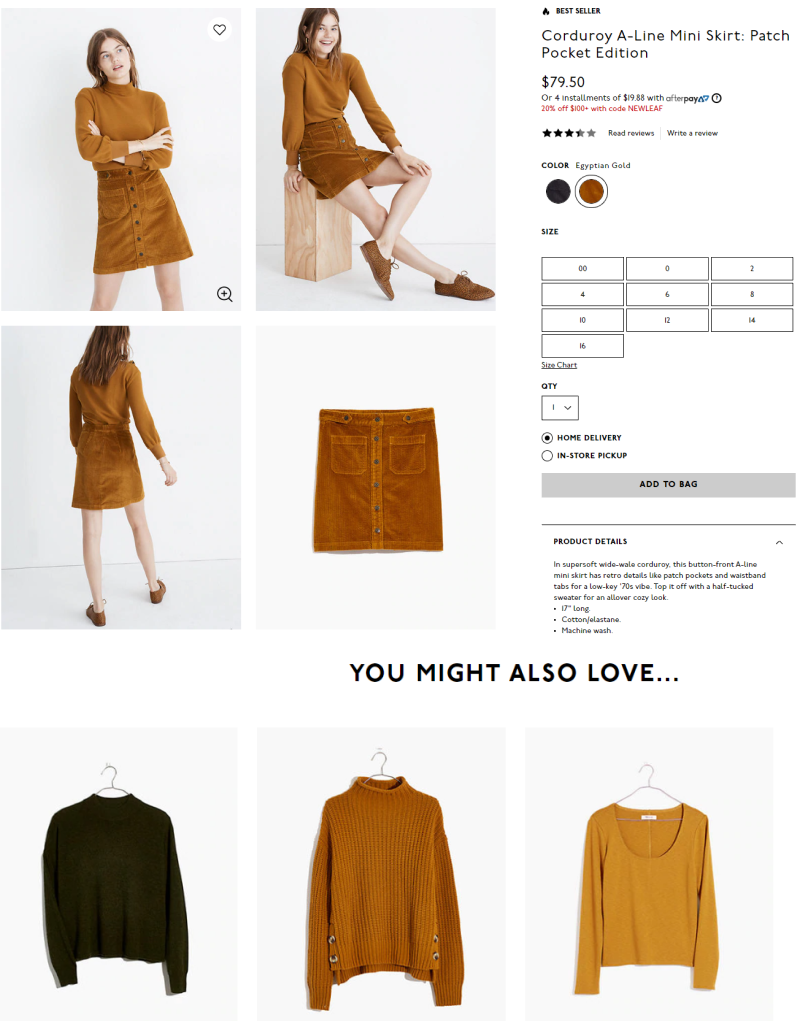
Having related products on a product page isn’t uncommon. What makes this example great is that Madewell is showing products that feature similar colors or styles, making them more likely to be a good fit for the customer.
Takeaway: Think about a common thread between your products, and use that to influence what products you suggest on the page of another item.
2. Amazon
Amazon, the online marketplace powerhouse, is a prime example of cross-selling. Most commonly, cross-selling can be seen on their product pages, where they promote items other people purchased.
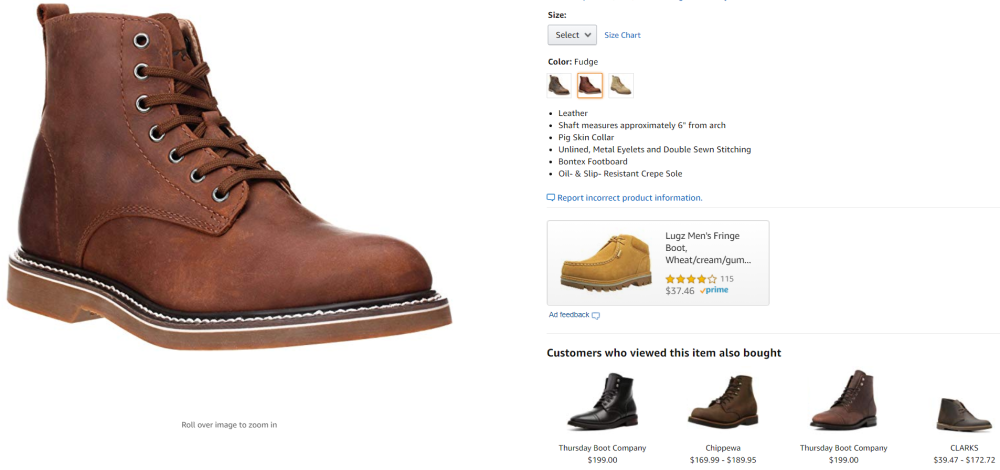
It’s one thing to show related items, but it’s another to show items other customers bought. This approach serves to validate the customer in their decision to purchase one of those items, as other customers also purchased those items. It’s also a great use of customer data, in that data generally speaks for itself, making these product suggestions more accurate than those based on someone’s gut instinct.
Takeaway: Use customer data to build out cross-selling opportunities, and choose language that makes a customer feel as if their purchasing decision is sensible and is shared by others.
3. Lush
Lush makes and sells high-quality handmade cosmetic products, including shampoo, body washes, and bath bombs. Much like their branding, their cross-selling approach is different from the competition, in that they promote what’s already selling and getting great reviews.
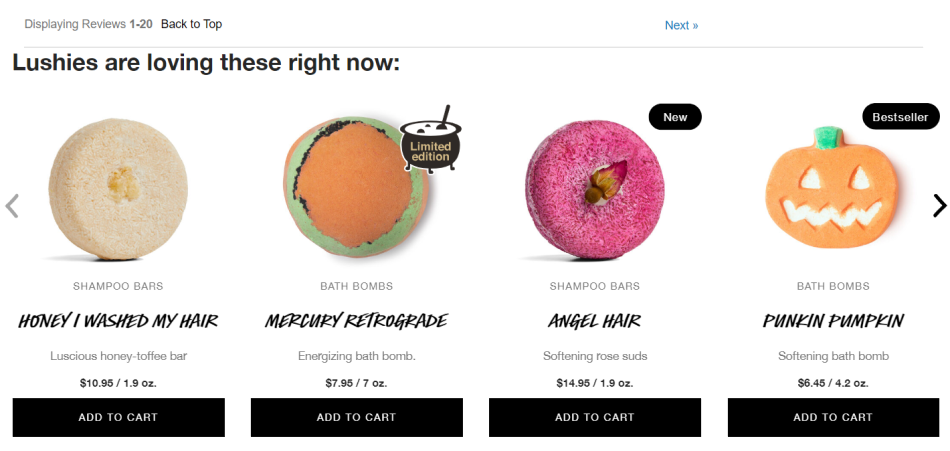
Unlike the previous examples on this list, Lush uses the space at the bottom of their product pages to promote products that are currently trending on their site. They also use their brand-specific language, pointing out that “Lushies” are buying these products. This makes the customer feel like a part of the group, while the fact that the products displayed are trending plays into FOMO—the fear of missing out.
Takeaway: Use your sales data to cross-sell products that are on the rise, while also leaning into your branding to make customers identify with your brand even further.
4. REI
REI is a co-op that sells camping gear, outdoor equipment, and athletic supplies. Their method of cross-selling is unique, in that they’re very up front about it, calling the items “complementary items.”
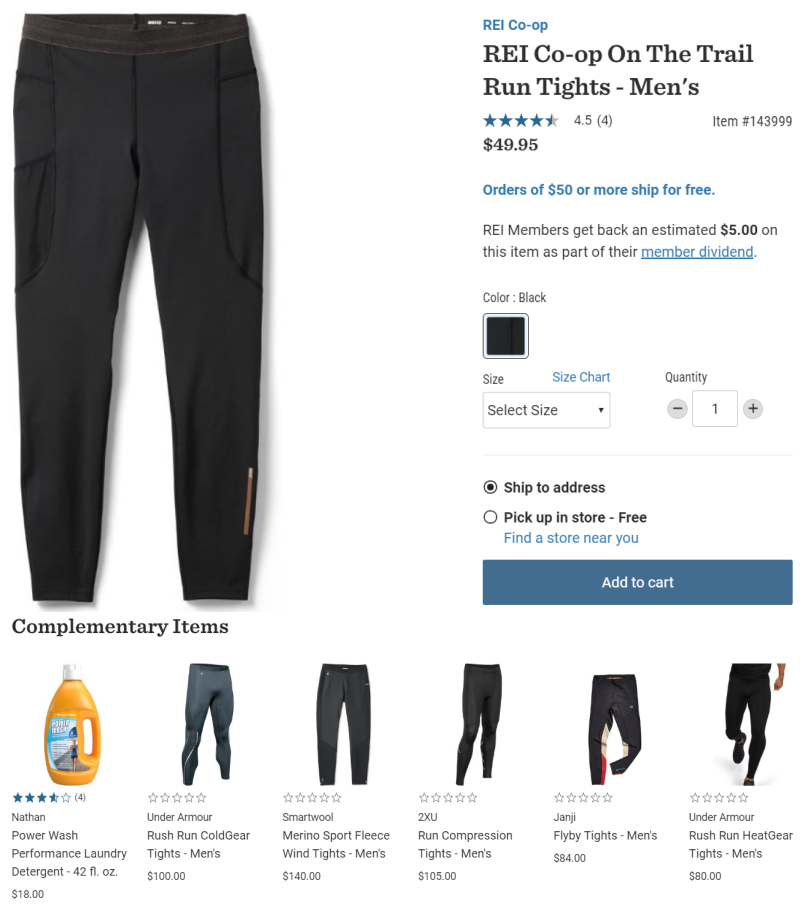
REI is clear that the products they’re recommending are complementary, in that they will go well with the main listing or even benefit it in some way. (Especially in the case of the laundry detergent.) This straightforward language makes it clear to the customer that these products aren’t needed but go well with the one already being considered.
Takeaway: Be it through language or the products chosen, make it clear to the customer that the products being cross-sold are beneficial and complementary, not replacements or upgrades.
5. Bonobos
Bonobos, seller of men’s clothing, takes a cross-selling approach similar to REI’s but puts their own appropriate spin on it.
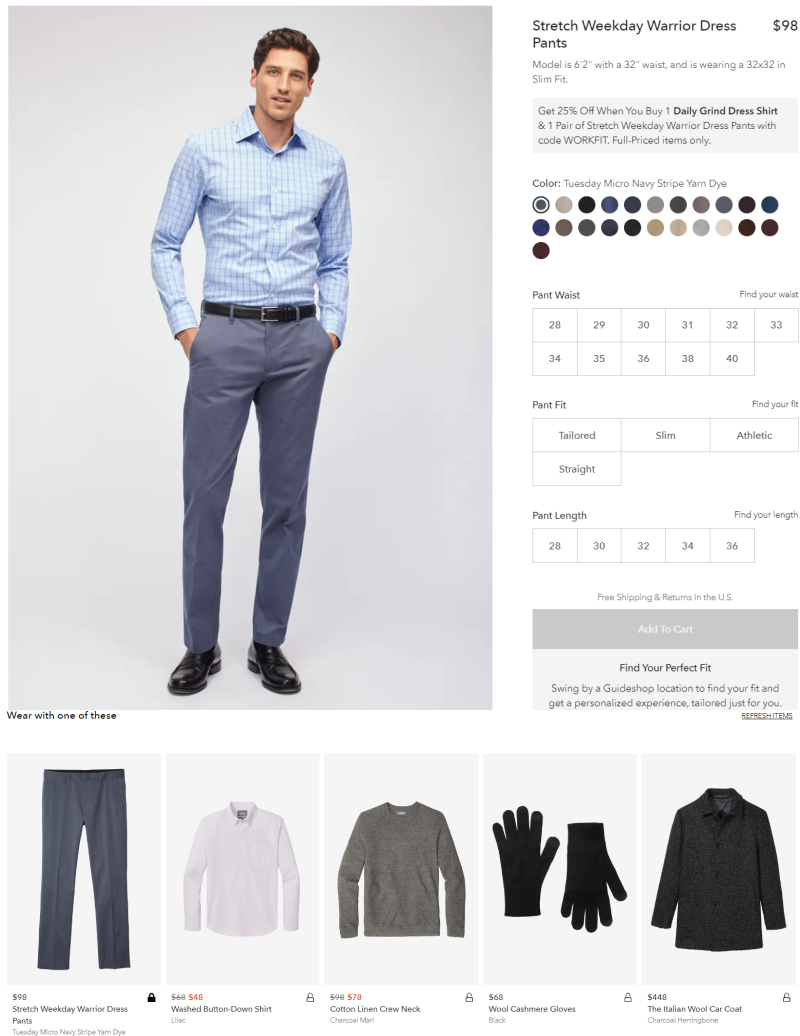
Bonobos does a few unique things here. First, they’re offering products that aren’t similar in color, like Madewell. They’re offering products that will pair well with the pants, making it a complete outfit. Next, similar to Lush, they use the right language, instructing the customer to “wear” one of the following items rather than calling it a “suggested” product.
Takeaway: Think about how your products interact and relate to one another. Then, present them in a way that makes sense for your brand, using the right language and pairings to help customers see the promoted product as a more cohesive experience.
6. Target
Target, of retail fame, does a great job with product cross-selling, thanks to their multifaceted approach.
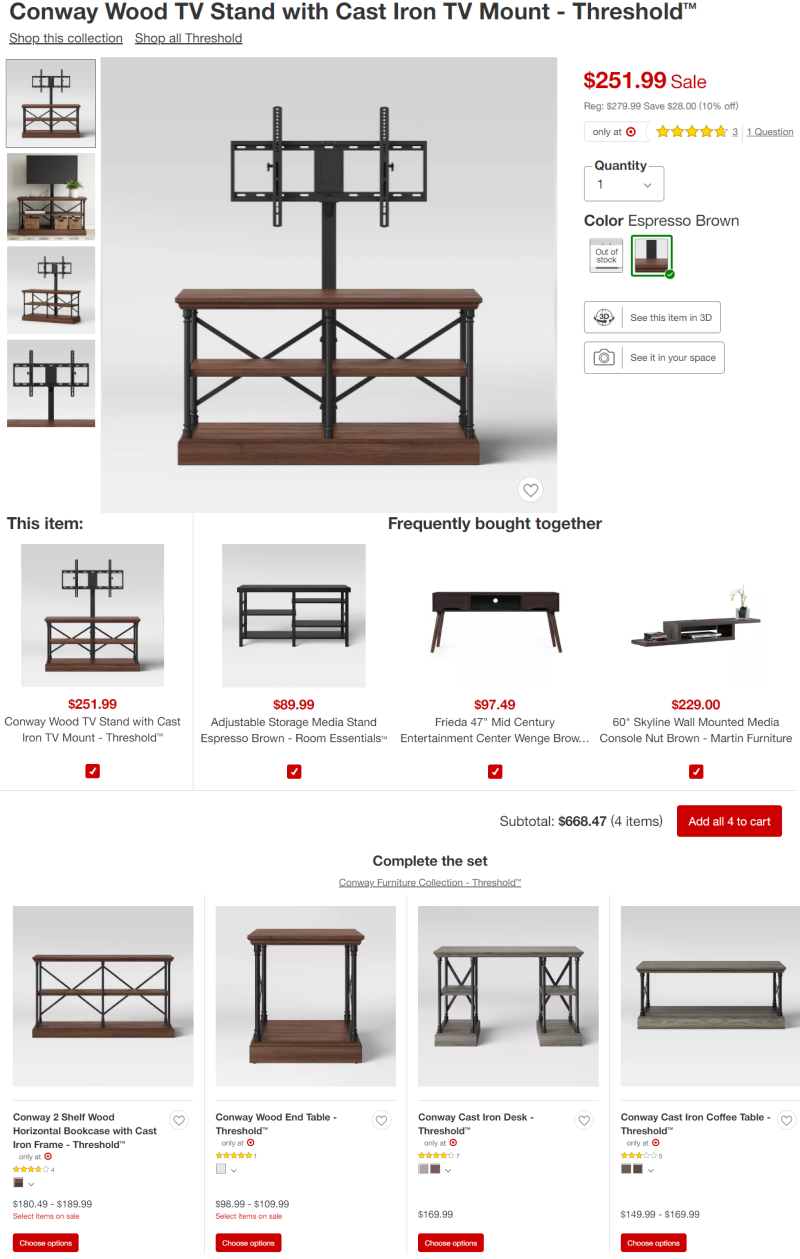
Target utilizes various cross-selling techniques, using multiple approaches to maximize the number of products they suggest. First, they have the “Frequently bought together” section, which shows customers the products that other shoppers also purchased. Then, they entice customers further with a “Complete the set” section specifically for furniture. This shows the rest of the collection, an up-front approach to cross-selling that gives customers a visual of how their product interacts with the others like it.
Takeaway: Don’t be afraid to use a variety of cross-selling techniques on your product page. If you have collections or sets, lean into that, and promote them while also showcasing other top-selling products.
Checkout-Page Cross-Sell Examples
Where product page cross-selling targets customers still in the process of shopping, checkout-page cross-selling presents the customer with complementary products during the final checkout stages. This can be particularly effective with more affordable items because the customer is already making one purchase and can possibly be enticed with additional ones that offer value. Check out these cross-sell examples to learn how to use this strategy.
7. MeUndies
MeUndies, seller of upscale underwear and socks, is a great example of checkout-page cross-selling.
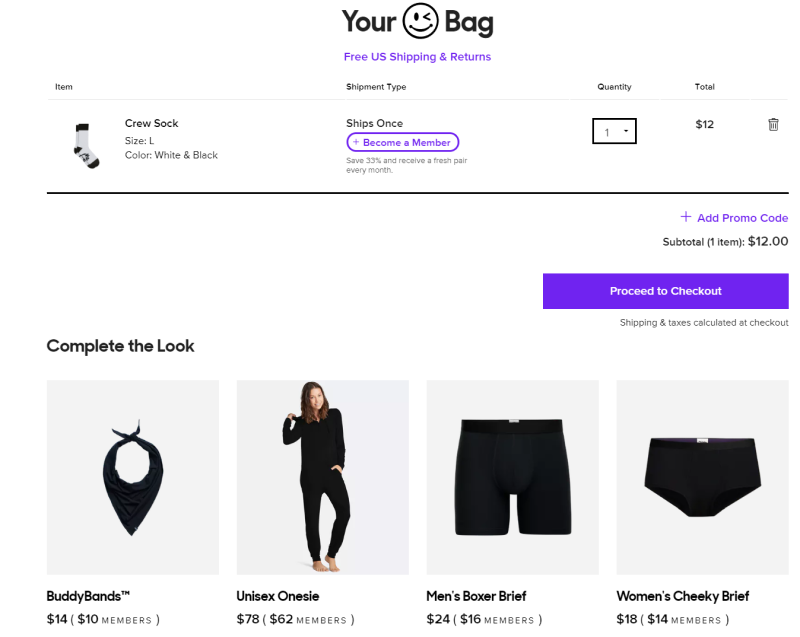
Once customers view their cart, they’re presented with the option to “Complete the look,” followed by several items that pair well with the ones in their cart. The language here is key; it’s encouraging customers to make their purchase complete, really leaning into the cross-selling.
Takeaway: Use language that conveys a sense of completeness when cross-selling products at checkout.
8. Wayfair
Wayfair, the large online marketplace, takes a nice, straightforward approach to checkout-page cross-selling, offering various related items.
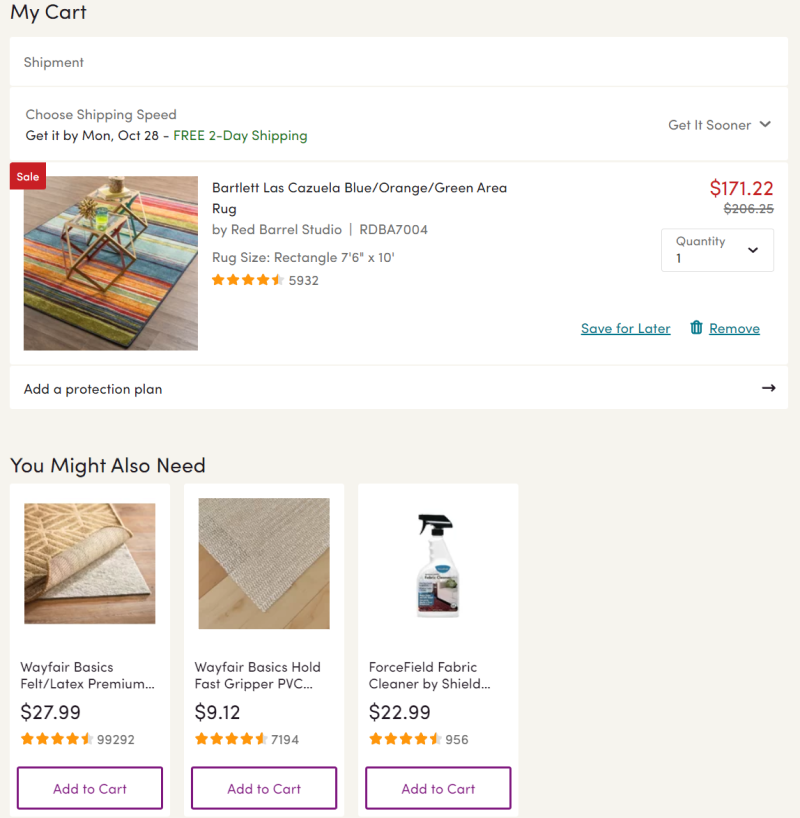
Unlike sites that cross-sell what’s trending, Wayfair suggests items you might also, in their words, “need.” These items supplement the main product or products in a very straightforward manner, like the fabric cleaner that goes with the rug. Wayfair also uses persuasive language, calling the items things “you might also need.”
Takeaway: Don’t overcomplicate things. A straightforward approach with persuasive language can be all you need to cross-sell items that really do make a core product better.
9. Apple
Apple, maker of electronics, is known for their accessories and tight branding. Their cross-selling reflects this in every way.
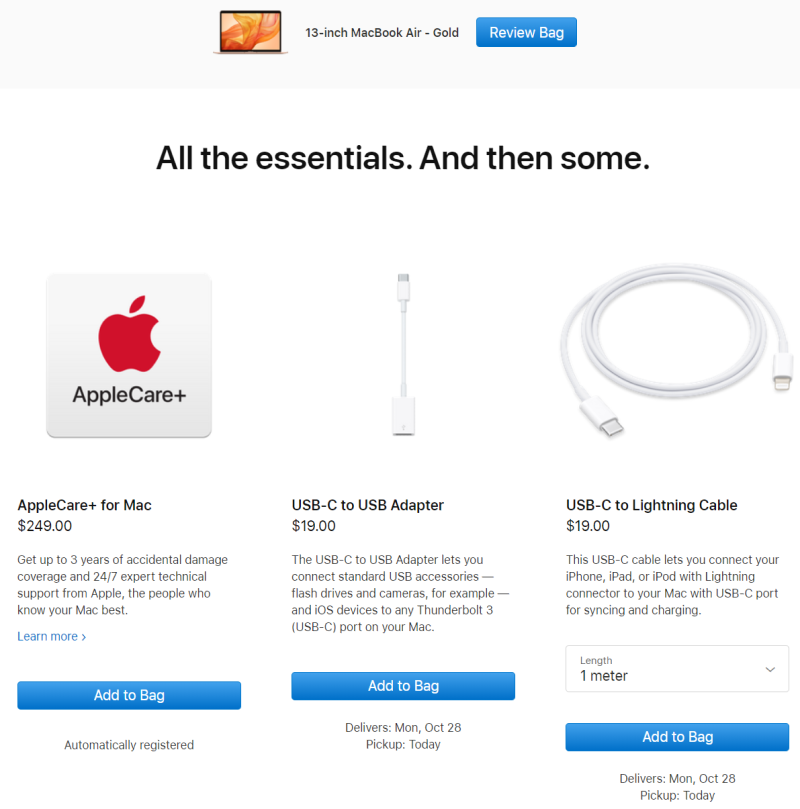 When viewing your bag, or cart, Apple suggests a few accessories that serve to enhance your experience with the product. The presentation is clean and simple, and some of the items are within that impulse-purchase price range. They also use language that’s in line with their casual, fun branding, letting you know you’re buying the essentials already.
When viewing your bag, or cart, Apple suggests a few accessories that serve to enhance your experience with the product. The presentation is clean and simple, and some of the items are within that impulse-purchase price range. They also use language that’s in line with their casual, fun branding, letting you know you’re buying the essentials already.
Takeaway: Keep it simple, and keep it branded. In some cases, less can be more, especially when you’re presenting additional products on top of an expensive purchase.
10. Vans
Vans is known for their shoes but also carries a number of accessories and clothing items. Their cross-selling makes sure customers know this.
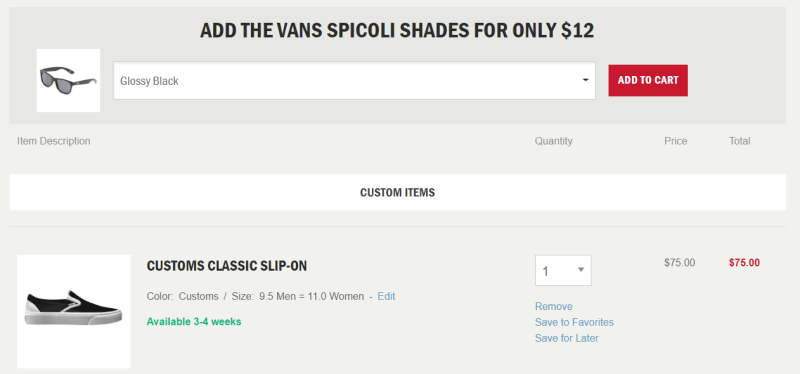
When checking out, Vans presents you with an additional item to add to your cart—in this case, sunglasses. This is slightly risky, as there’s only one item being promoted, and the customer may simply pass. But the item is also on the cheaper side, putting it into the impulse-buy range.
Takeaway: When cross-selling a single item, shoot for something affordable, making it more likely to be an impulse-buy.
Email Cross-Sell Examples
This type of cross-selling uses email marketing to promote related products. This can be done after a customer has made a purchase, or even if the customer has only subscribed to the newsletter or added a product to their shopping cart. This type of cross-selling can be powerful, in that the people seeing your emails are already engaged with your brand on some level.
11. FabFitFun
FabFitFun makes a box of curated beauty supplies that ships each quarter, while also selling various products. In their emails, they play up their fun branding while promoting products in a clear, attractive way.
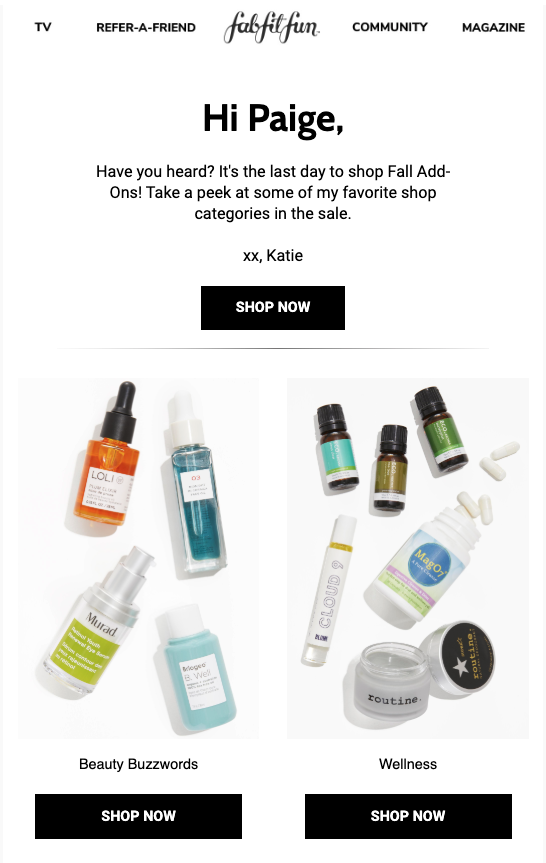
As a part of FabFitFun’s subscription box, you can purchase add-ons. These add-ons are essentially cross-sold items, which the email does a great job of promoting. Not only do they showcase their add-on products, they also create a sense of urgency by pointing out that it’s the final day to get them.
Takeaway: Use email to drive urgency and promote easy add-ons or cross-selling opportunities.
12. Allergy Buyers Club
Allergy Buyers Club is a one-stop shop for those needing air purifiers, bedding, and other allergy-related items. Their email puts a unique spin on cross-selling, adding instructions into the mix.
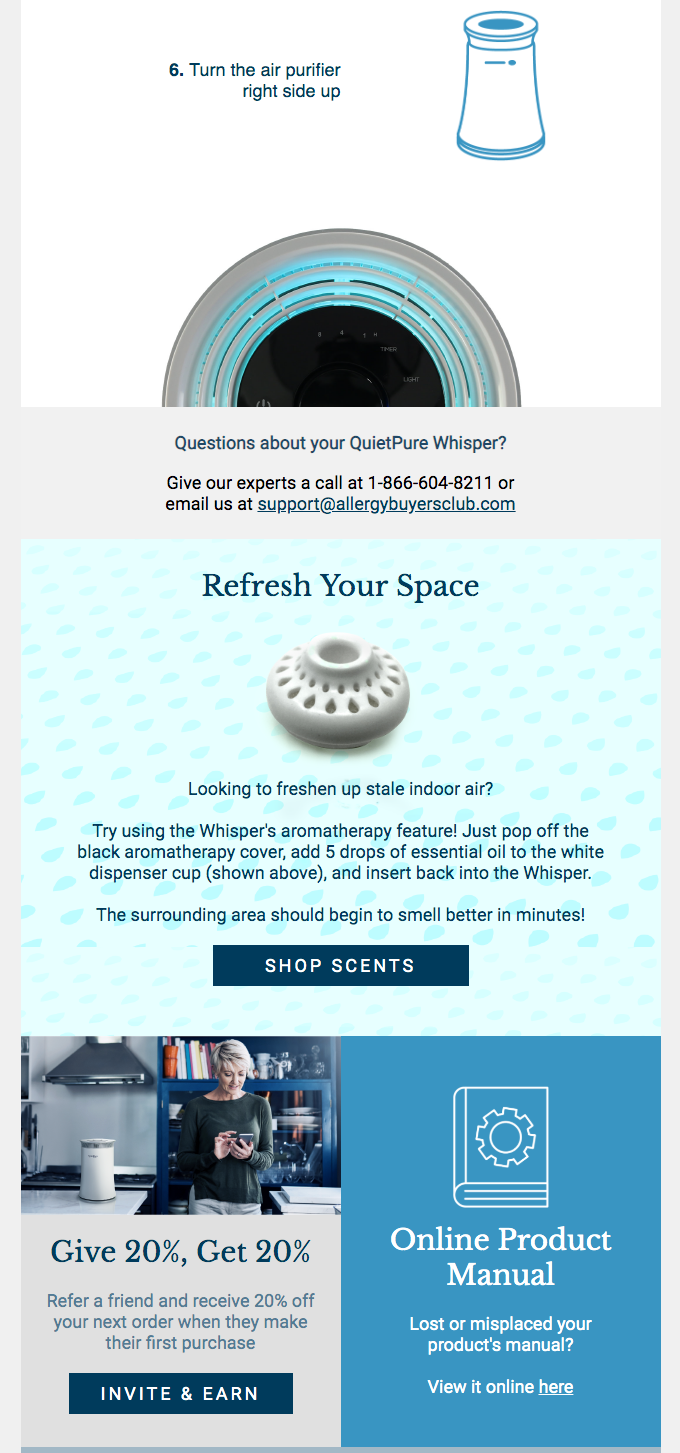
After purchasing an item, Allergy Buyers Club sends you detailed instructions on setting it up. Beneath these instructions is an item that integrates into the purifier—in this case, aromatherapy scents. This is a great way to promote a product that integrates with something the customer has already purchased, rather than something they’re thinking about purchasing.
Takeaway: Use your email to promote products related to something the customer has recently purchased. They’ve already bought into your company, making the products even more appealing.
13. Asics
ASICS, maker and retailer of athletic gear, uses email cross-selling to promote the current sale while pushing additional products as well.
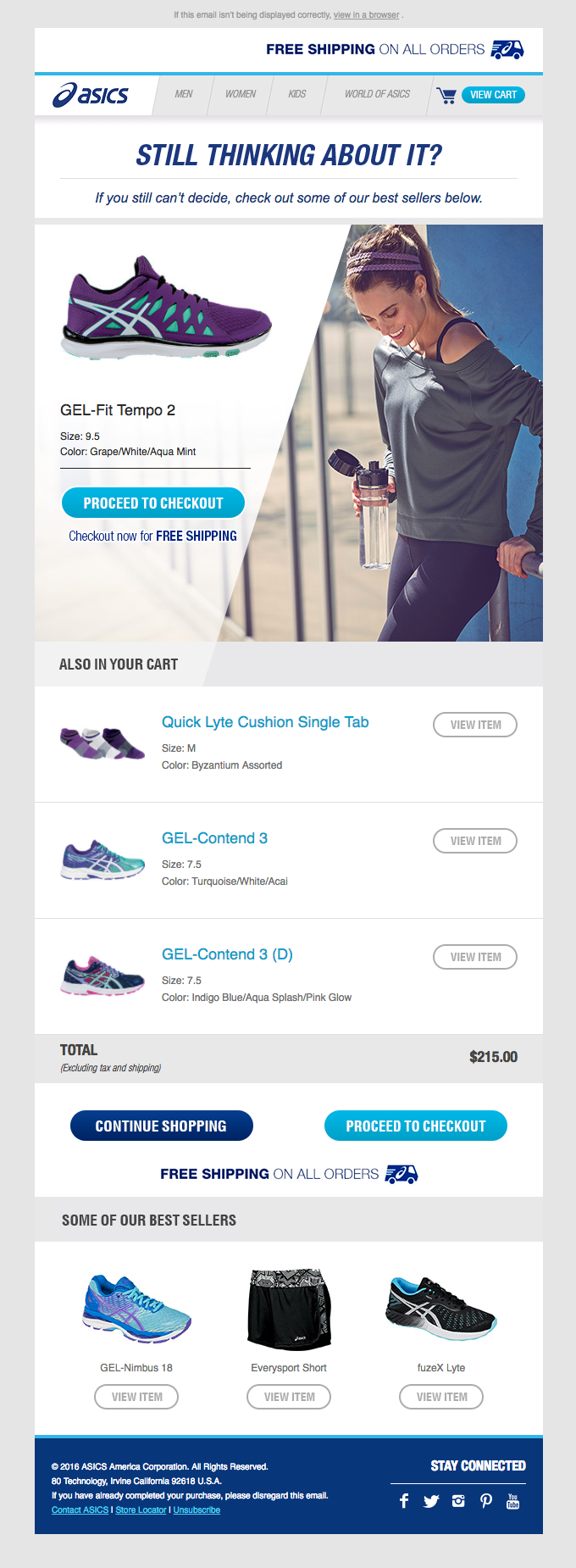
After cart abandonment has occurred, ASICS sends an email reminding you about the item. They then sweeten the deal, offering free shipping while also promoting additional best sellers. This is a great way to encourage the customer to make the purchase, while also driving sales to other products.
Takeaway: Use emails to cross-sell while also offering incentives for current products in the customer’s cart.
14. Dollar Shave Club
Dollar Shave Club made waves in the shaving world by offering affordable subscription boxes filled with shaving supplies. They’ve taken things a step further with their email marketing, cross-selling various add-ons.
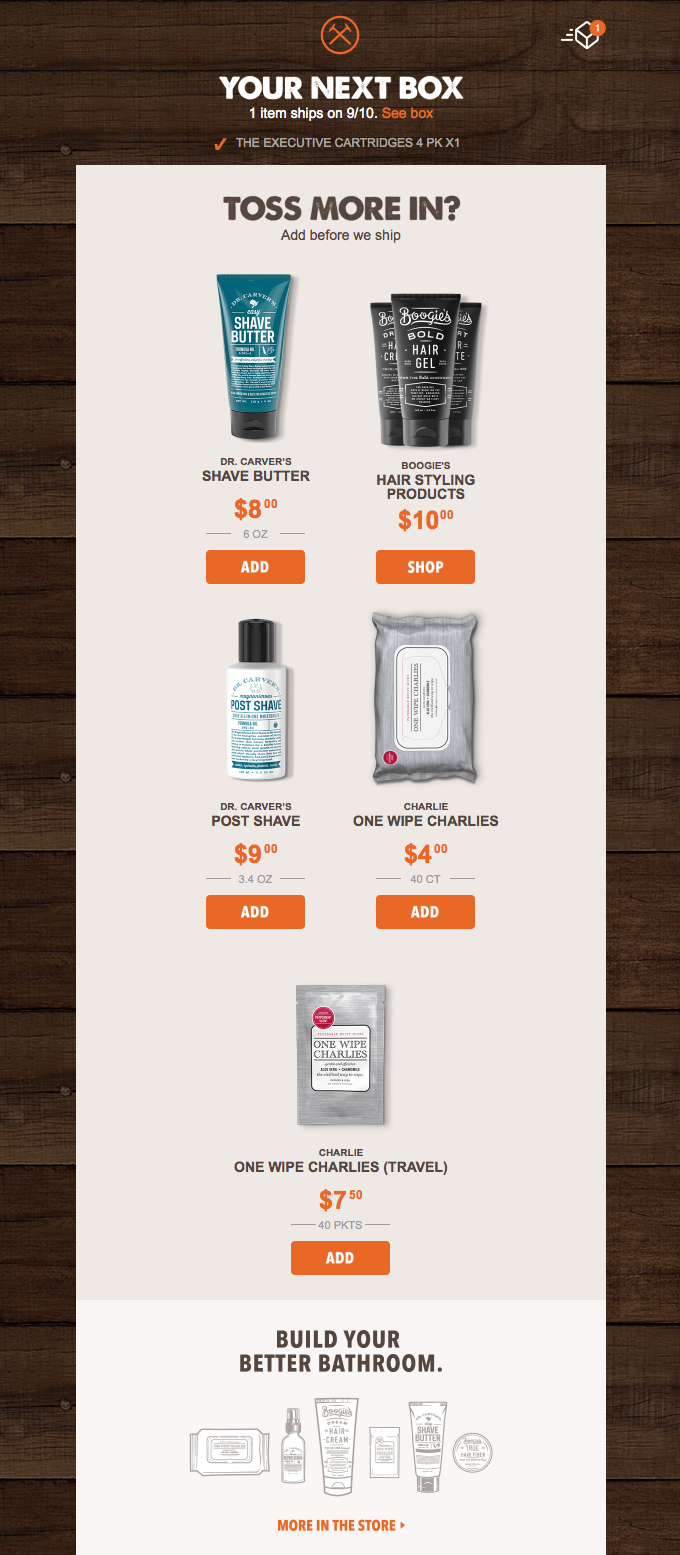
Before shipping out your monthly shave box, Dollar Shave Club sends an email promoting various add-ons that can result in an even more pleasant shaving experience. This example is particularly great because Dollar Shave Club is creating a sense of urgency to encourage adding the products to your box before it ships off.
Takeaway: Create urgency to encourage customers to purchase add-ons.
15. Heroku
Heroku, a Salesforce company that’s used for app development, uses their emails to promote add-ons, even if there isn’t a cost.
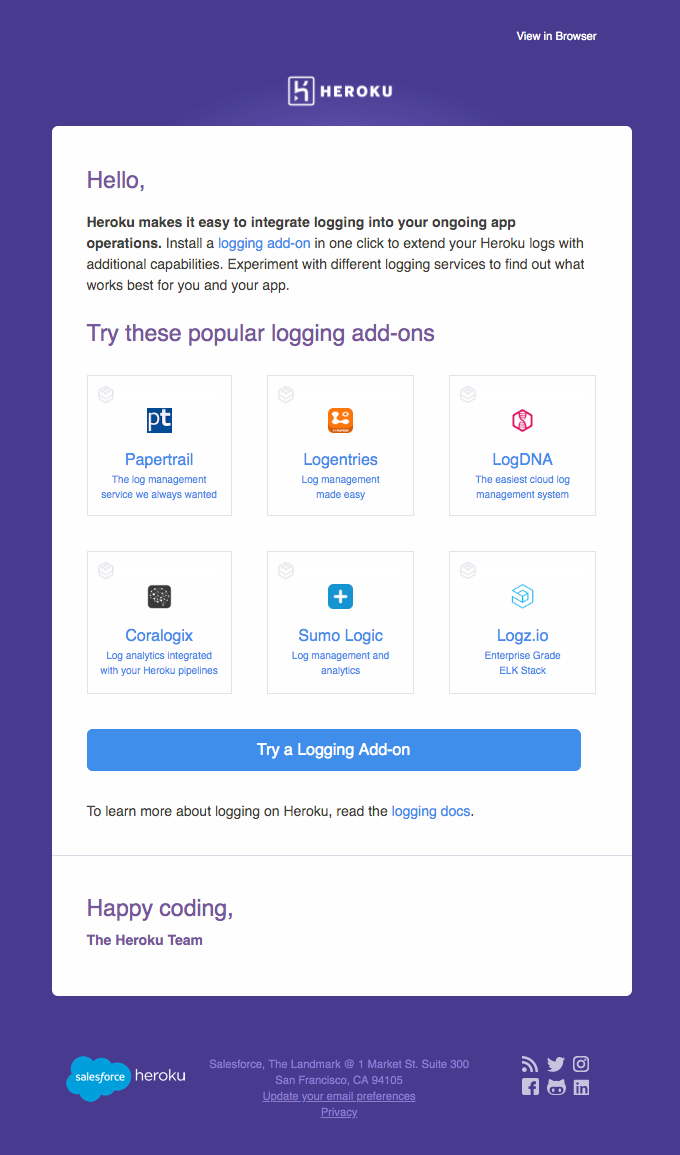
Heroku, being a cloud-based platform, offers a number of add-ons that can change how their services work. Most of these add-ons are totally free, making this an interesting example of cross-selling. While this type of cross-selling doesn’t promote further sales, it does encourage customers to interact with the brand and product more.
Takeaway: Cross-sell free services or add-ons to drive customer interaction and feedback, and build trust with your brand.
16. UNIQLO
UNIQLO is a clothing maker and retailer, known for eye-catching clothing and branding. Their email cross-selling is no exception, offering something different from the competition.
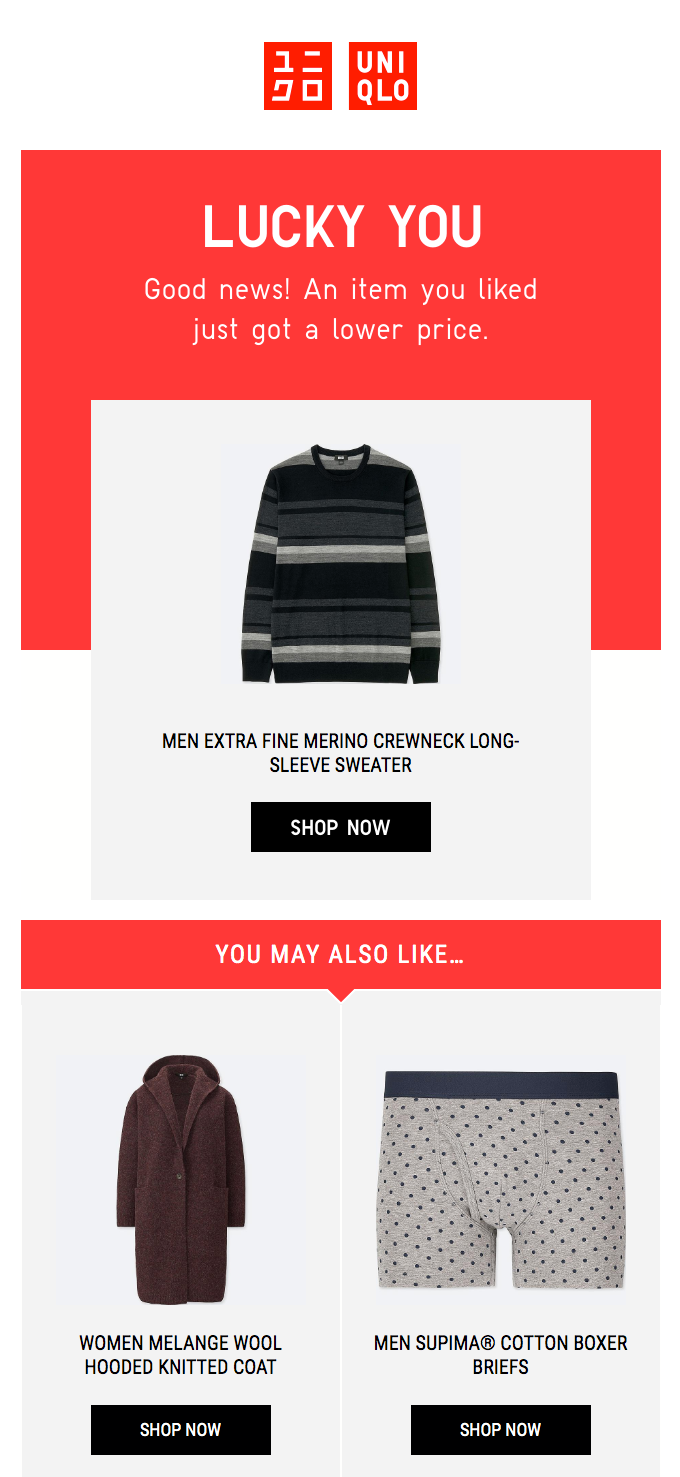
UNIQLO’s cross-selling email is different from the others on this list, in that it notifies the person when an item in their cart dropped in price and also promotes other related items. This is a great way to show you care about the customer: you are not simply reminding them about a product but also telling them it’s even cheaper for the time being.
Takeaway: Let customers with abandoned carts know when an item they’re interested in is on sale, while also promoting related items. This can help drive sales, and it shows the customer you care.
Customer Experience Cross-Sell Examples
You can turn the actual customer experience itself into a cross-selling opportunity by presenting the customer with ways to customize their product using complementary items or features. This is often a more subtle approach to cross-selling than product-page or email cross-selling. Because of the subtlety, it’s easy to implement this cross-selling in conjunction with other types. Here are some cross-sell examples to show you how to do it.
17. Billie
Billie sells razors for women, taking a similar approach to Dollar Shave Club, with a subscription box. They also do a great job with cross-selling during the initial sign-up experience.
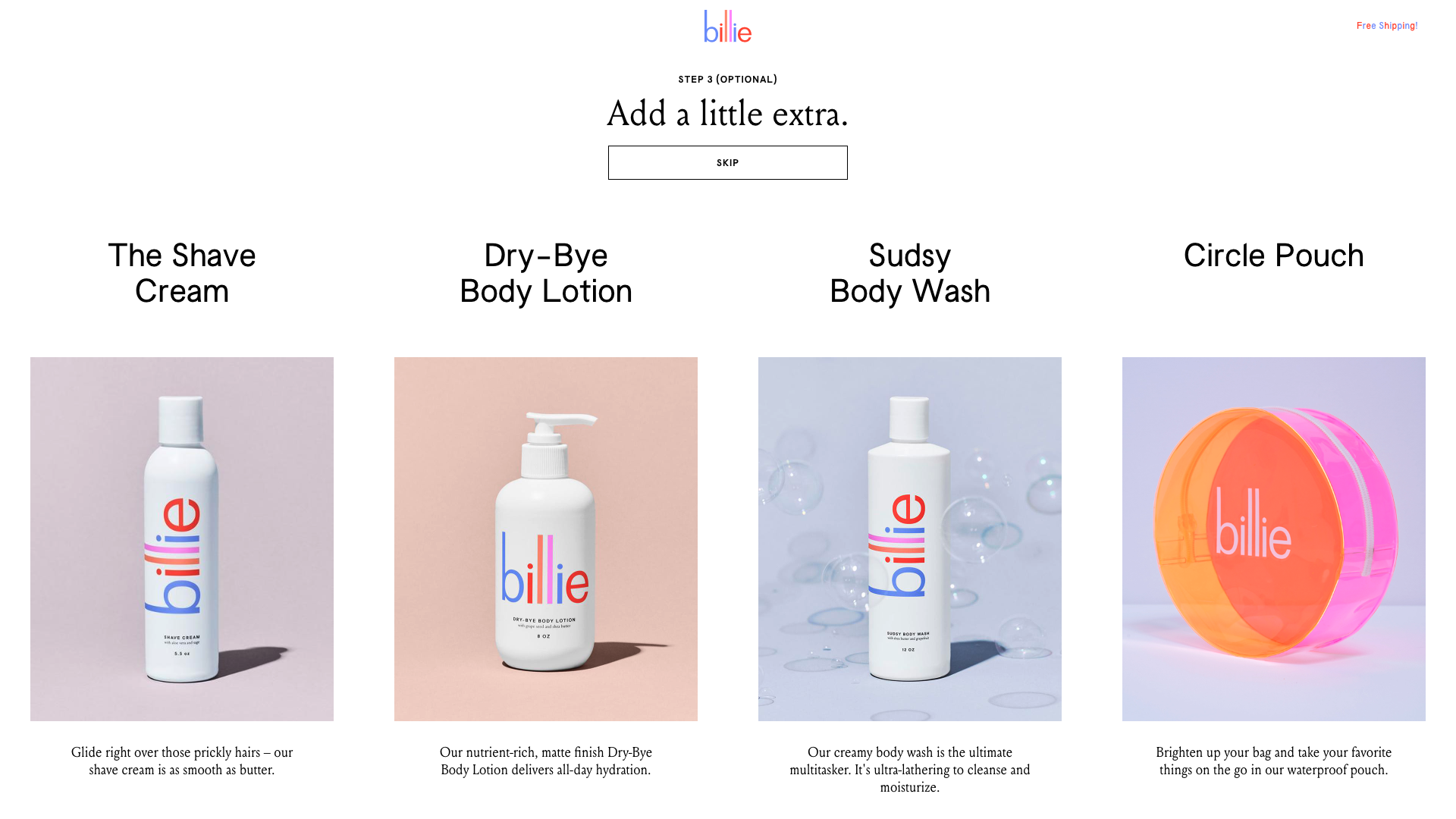
When creating your razor subscription on Billie, they have an additional step that allows you to add shaving cream, body wash, and other complementary shaving products. These products have no price listed and must be added to your bag first, letting you focus only on the benefit they provide. This makes it easy to add a few to your box before moving to the next step.
Takeaway: Cross-sell products during the sign-up process if possible, while focusing on the product’s benefits above all else.
18. Ikea
IKEA, maker of furniture and home accessories, is known for their affordability and unique style. Their cross-selling plays off their style to make complementary products more appealing.
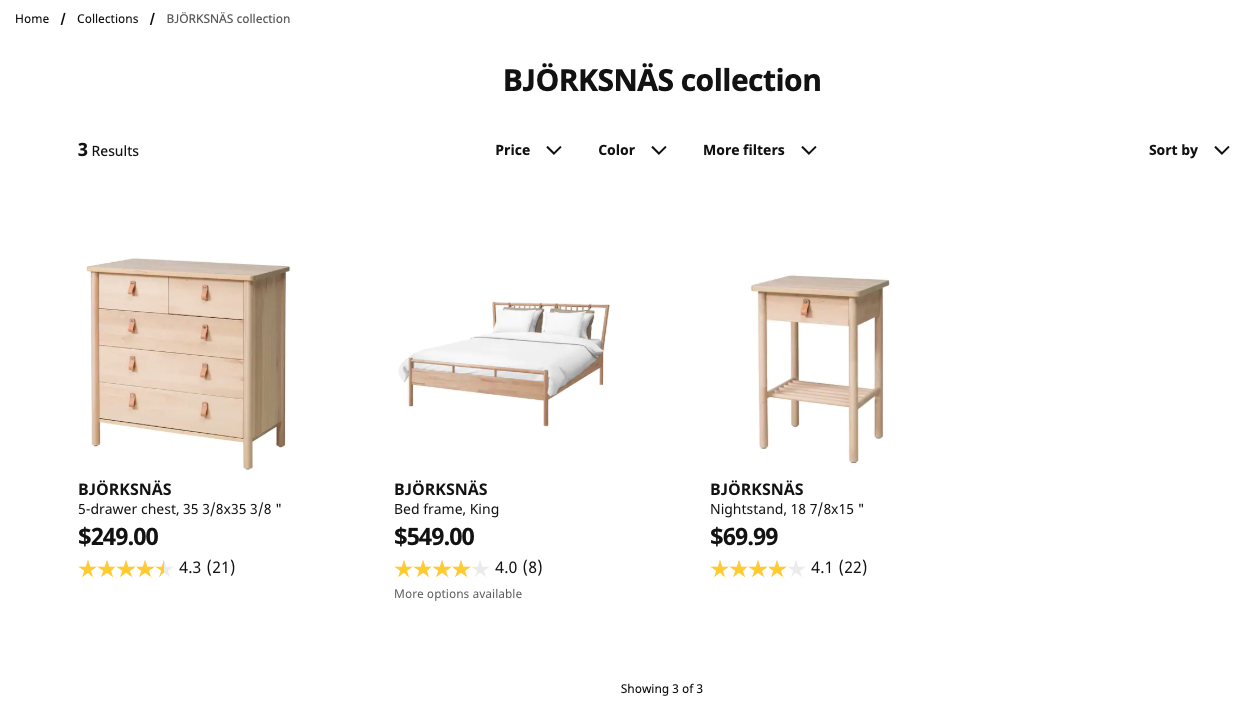
Shopping for furniture is exciting but tiring. IKEA knows this and helps customers take the stress out of shopping by selling their pieces as collections. This form of cross-selling helps the customer accomplish their goalâ —furnish a room —much quicker, while also landing some extra product sales for IKEA.
Takeaway: Think about how cross-selling select products together can make life more convenient for your customers.
19. Glossier
Glossier makes cosmetic and beauty products and has a clean, customer-oriented brand. This is made even more apparent in their approach to CX cross-selling.
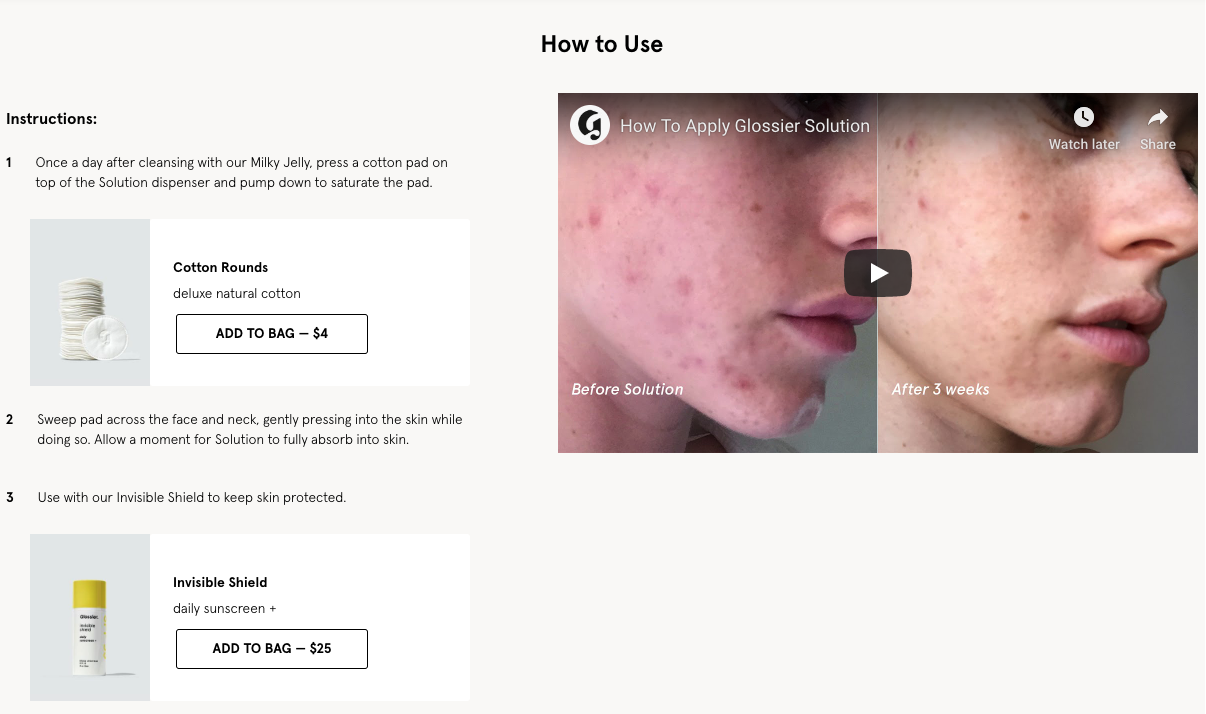
When you come across a product on Glossier, you can scroll down and find the “How to use” section. This walks you through the product and how to apply it, but it also suggests complementary products along the way—cotton rounds for applying their products, for example, and a subtle, daily sunscreen to apply afterward. Like IKEA, these kinds of products provide the benefits of the cross-sell while also offering convenience to the customer.
Takeaway: Make customers and convenience top priorities when designing CX cross-selling. This will make it more organic and possibly more effective.
Price-Strategy Cross-Sell Examples
There’s a lot of strategy and psychology that goes into setting prices on individual products. You can take this a step further with bundling, a type of cross-selling that encourages customers to purchase complementary products in exchange for savings.
20. Harry’s Razors
Harry’s, maker of razors and shaving accessories, sells individual products and bundles and offers a subscription-based refill program. This is a lot to manage, but they keep their cross-selling clean, especially when it comes to their pricing strategy.
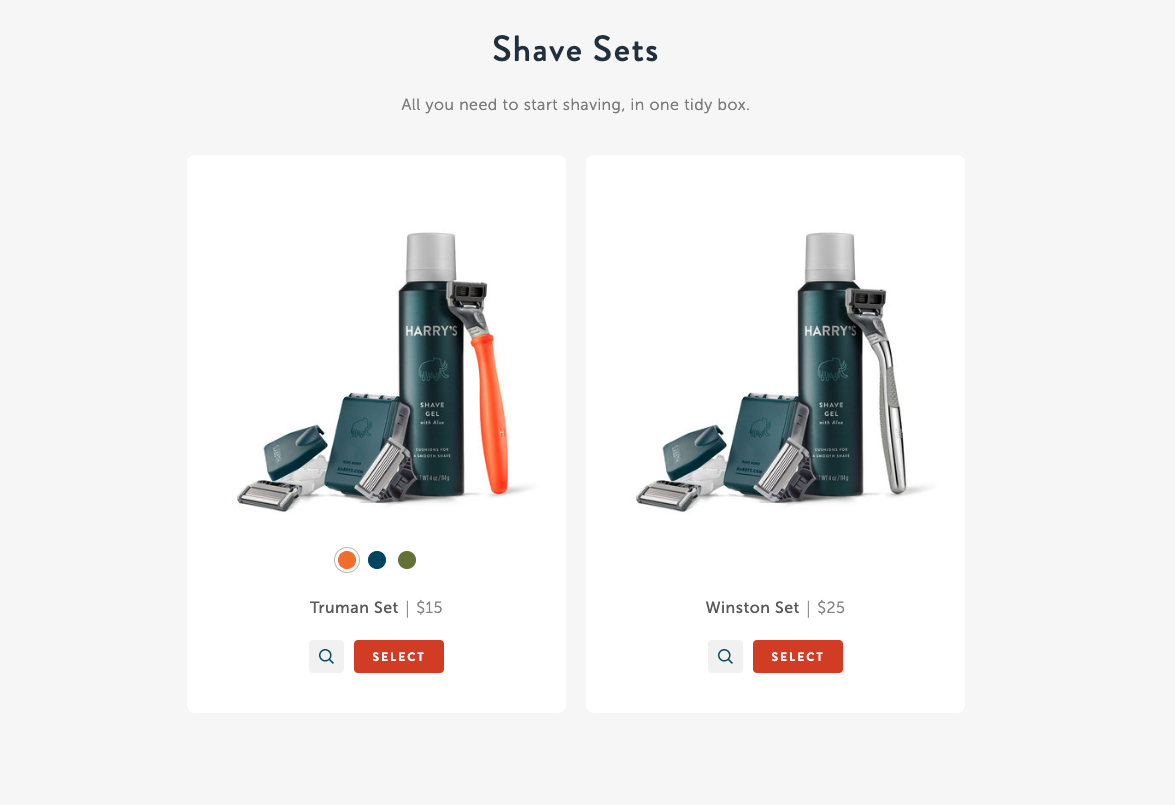
Harry’s prides themselves on offering products that are already affordable. They take things a step further with their bundles, which offer a core razor and complementary products at a reduced rate, with few (if any) points of customization. This makes it easy for the customer to pick one and go.
Takeaway: Bundle relevant products together, and keep things simple to make it easier for customers to grab and go.
21. Away
Away sells luxury luggage and travel accessories. While luggage can be costly when purchased individually, Away makes it more appealing by dropping the price with their bundles.
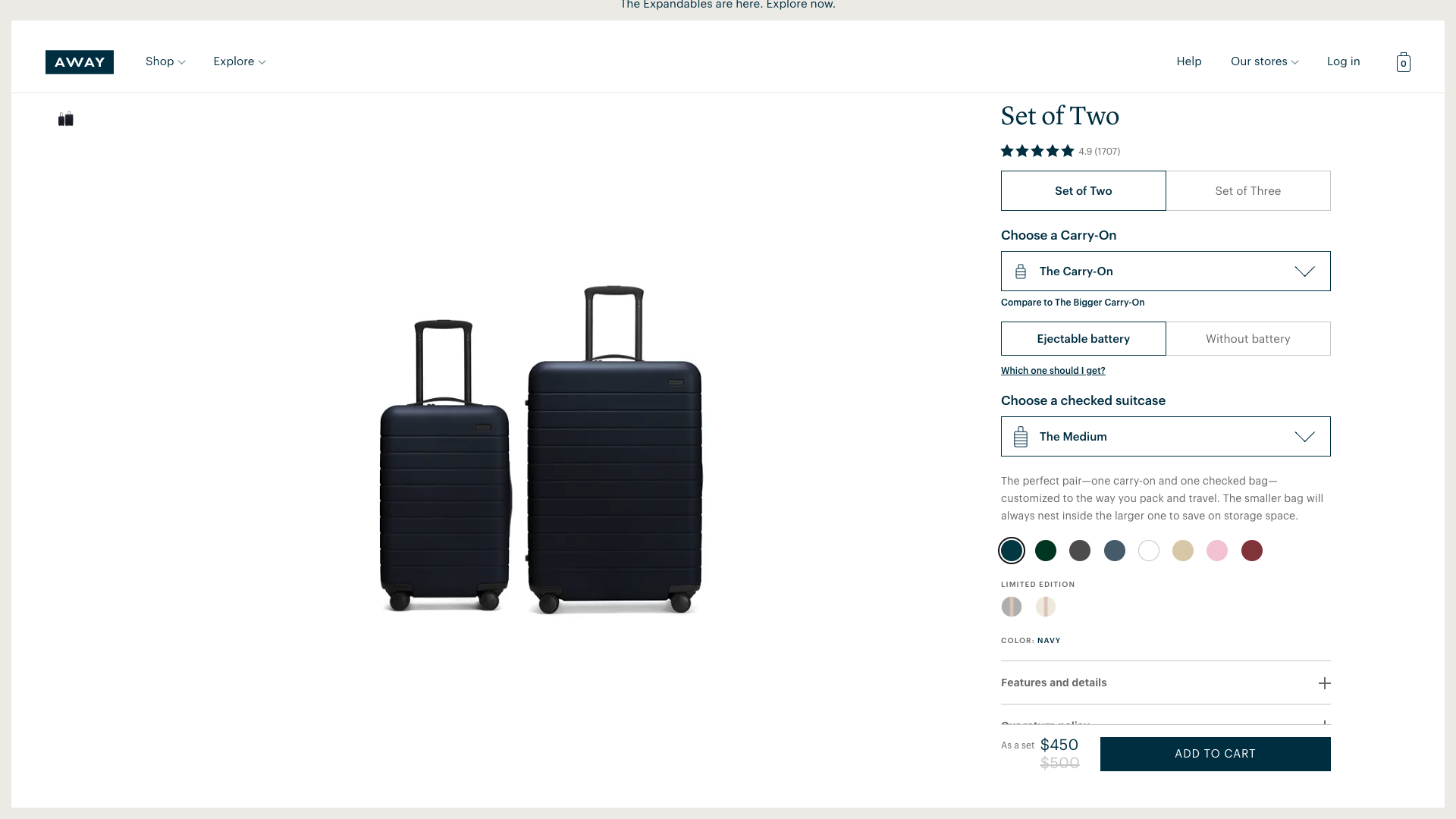
What makes Away’s price-strategy cross-selling exemplary is how streamlined the customization process is. Luggage is something you need to buy only a handful of times in your life, so you want to get it right. Away makes sure the customer gets what they want by offering a few straightforward options, with a reduced price for buying the set.
Takeaway: If your products can be customized, make sure it’s easy to navigate the process so customers can focus on purchasing and saving.
22. Sephora
Sephora is a maker and retailer of beauty and cosmetic products. With a huge collection of more than 300 brands on their site, they have an almost overwhelming number of products, making bundling difficult. But they’ve found a way.
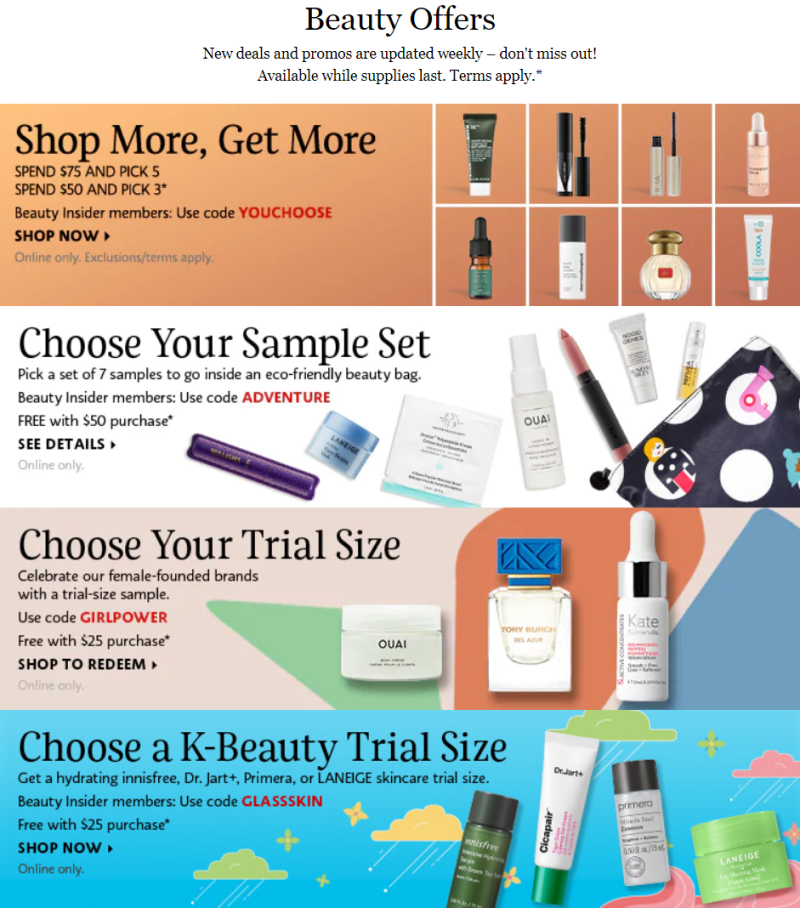
While Sephora features some premade bundles, they also have weekly offers that allow customers to build their own bundles and save. This gives customers more freedom, allowing them to spend as they see fit, so long as they meet the requirements for the offer.
Takeaway: Don’t be afraid to turn the reins over to your customers and let them build their own bundles, especially if you have a large selection of products.
Put Customers First in Cross-Selling
Getting a customer interested in your products is a great, fleeting feeling. Heed the moment, and help your customers get even more out of their potential purchases by offering products that serve to enhance the experience.
No single solution will work for one company. Pull inspiration from the companies here, and do some testing until you find what works for you. If you put your customers first and follow your branding, you’ll already be off to a solid start.
Once you get cross-selling right for your brand, you’ll be glad you put in the work. Your business will thank you, and your customers will walk away with products that deliver the best experience possible.
Digital & Social Articles on Business 2 Community
(47)
Report Post
